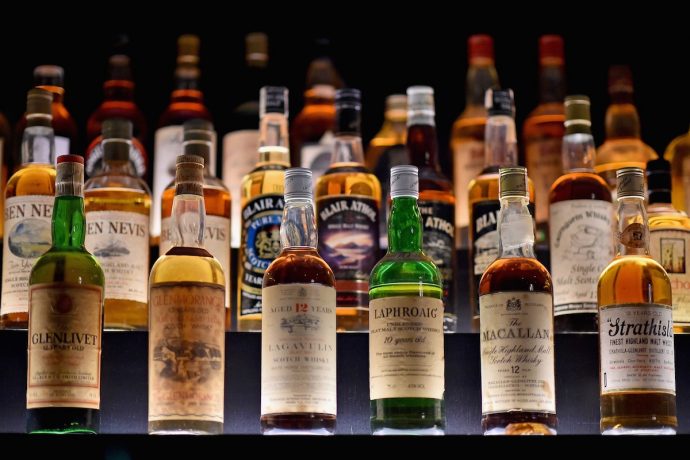This post is part of our Scotch Hub.
When the terms “scotch” and “whiskey” get thrown around the bar, it’s often lost that scotch is whiskey. It’s just a particular subset of the overall whiskey category, and just like bourbon, it adheres to a strict set of rules.
Below: those rules, plus a few other characteristics that make scotch scotch. So consult this cheat sheet, laminate it, and keep it in your pocket at all times. Or maybe just bookmark it.
Scotch Basics
- The term “whisky” is derived from the Scottish Gaelic phrase “uisce beatha”, which means “water of life”.
- Scotland spells it “whisky,” the same as Canada and Japan, while American and Irish producers typically spell it “whiskey.” Tweet this
- Scotch must be produced at a distillery in Scotland from water and malted barley. Other whole grains may be added, as well as plain caramel coloring, but nothing else.
- All scotch must be aged in oak casks for at least three years. Tweet this
- Much of a particular scotch’s color and flavor comes from the cask it matures in (excluding any additives).
- All scotch aging in casks will lose some of its alcohol to evaporation, referred to as the Angel’s Share.
- Scotch age statements must reflect the age of the youngest whisky in the bottle.
- Scotch must be bottled at no less than 80 proof (40% alcohol-by-volume).
- Despite the global popularity of single-malt scotch whisky, the majority of scotch consumed around the world is blended scotch whisky.
Scotch Whisky Regions
- Scotland boasts five distinct whisky regions: Lowlands, Highlands, Speyside, Campbeltown, and Islay.
- The Islands form a sixth unofficial region, and comprise all the whisky-making islands (Orkney, Jura, Skye, Arran, and Mull) except for Islay.
Scotch Categories
- Scotch Whisky Regulations 2009 (SWA) strictly defines and regulates the production, labeling, packaging, and advertising of Scotch in the UK.
- Scotch is divided into five categories to distinguish how it’s produced:
- Single Malt: distilled at a single distillery from water and malted barley without the addition of any other cereals; is batch distilled in pot stills.
- Single Grain: distilled at a single distillery from water and malted barley, but may involve other whole grains including wheat and corn.
- Blended Malt: A blend of single malt scotches from more than one distillery.
- Blended Grain: A blend of single grain scotches from more than one distillery.
- Blended: A blend of one or more single malt scotch whiskies with one or more single grain scotch whiskies.
Return to the Scotch Hub.




Thanks for the great article, I do wonder though, what is the major taste difference for the different Scottish regions. For me personally, I can’t tell the difference between a Highland and a Lowland whisky.
Paul, that’s a great question. Regions by Taste would make a good followup post. But for starters, Lowland whiskies are often softer and lighter in character, with delicate malts and more grassy notes. The Highlands is a big region, and those whiskies can vary dramatically from rich and sweet to bold and peaty. The best to way discern the differences is to try as many different whiskies as you can–a fun endeavor for sure.